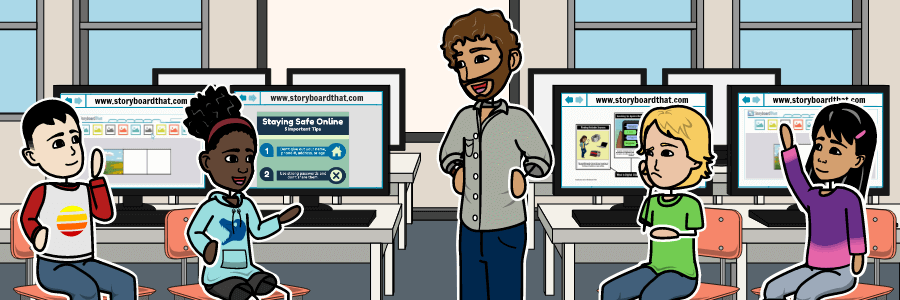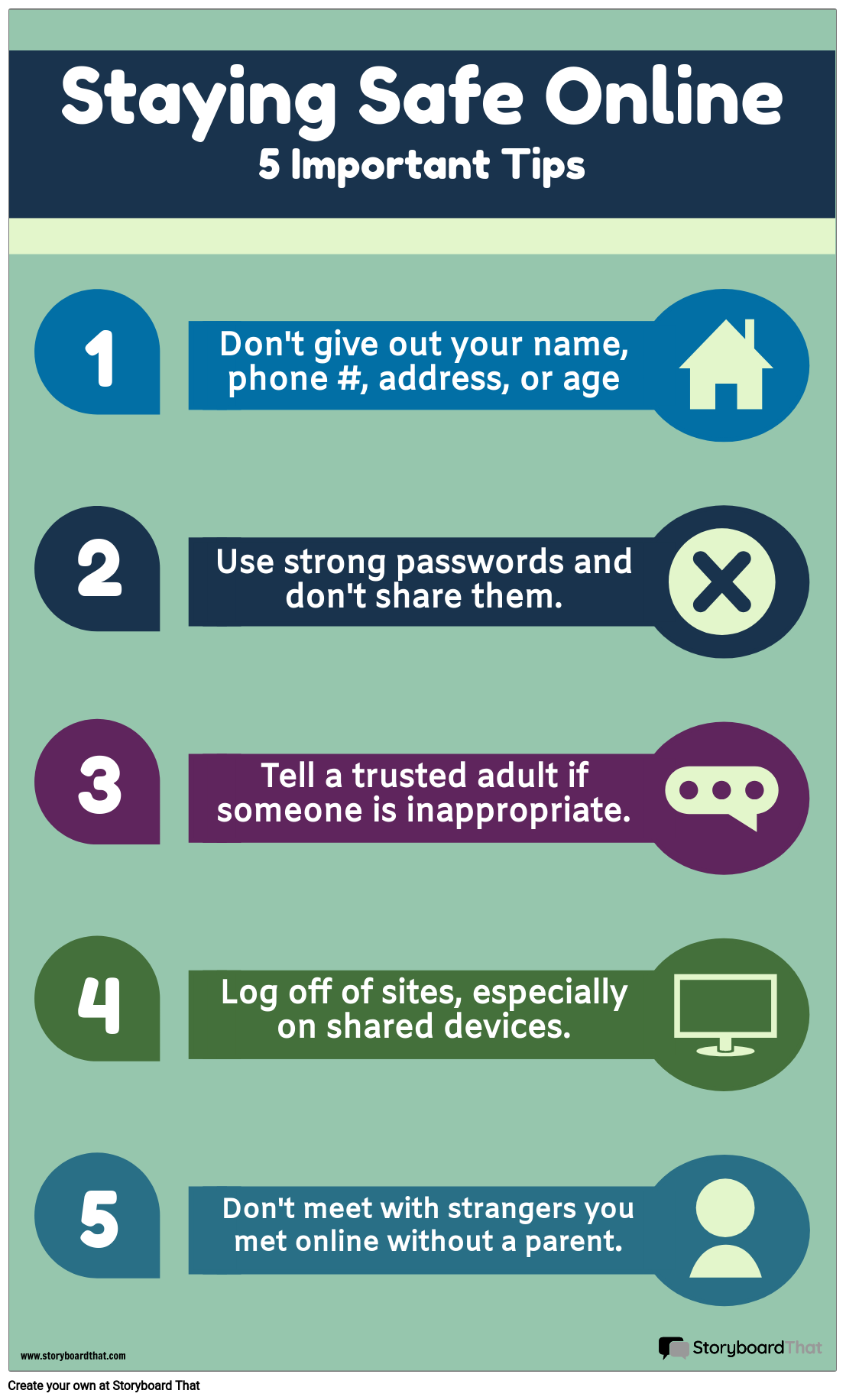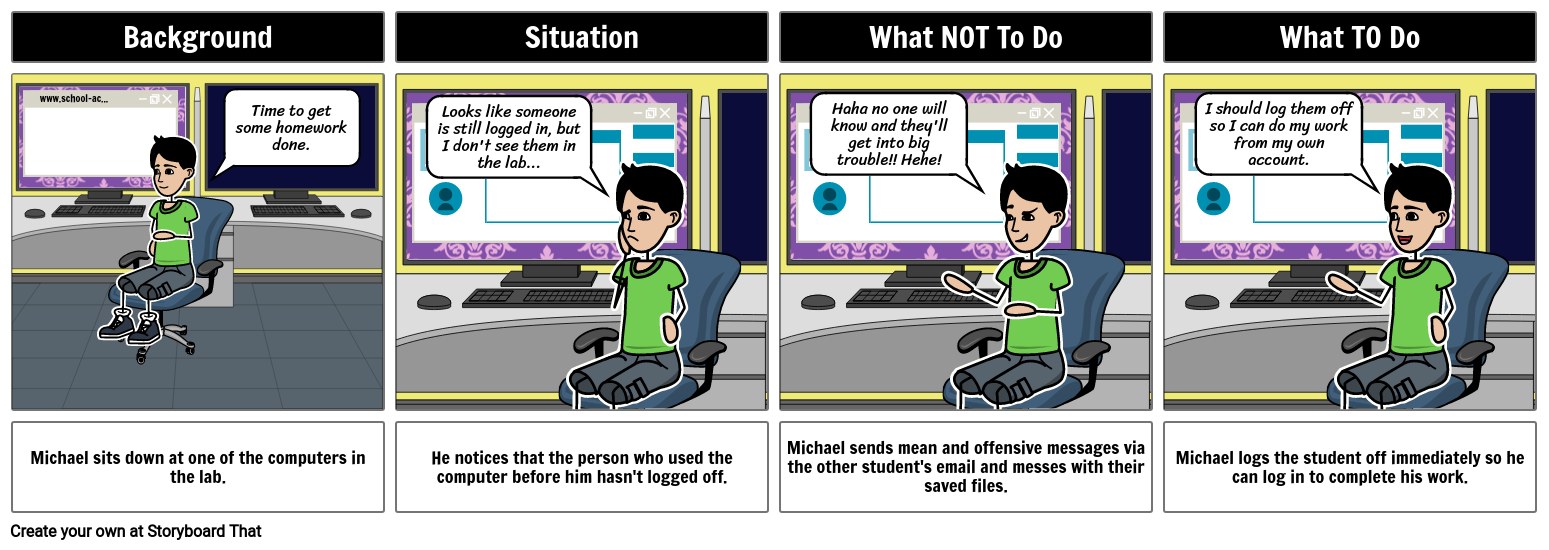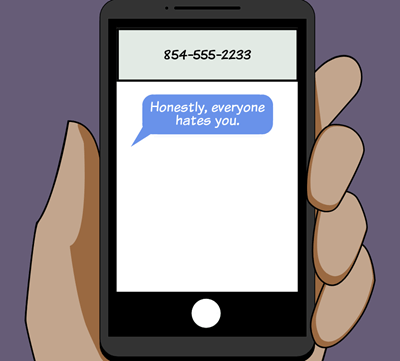Understanding Digital Citizenship
What is Digital Citizenship?
A comprehensive digital citizenship definition refers to the responsible and ethical use of technology by individuals. It encompasses behaviors that contribute to a safe, respectful, and productive online environment. In today’s interconnected world, where digital interactions are ubiquitous, understanding media education is crucial. What does digital citizenship mean? It includes knowing how to navigate the internet safely, recognizing and combating cyberbullying, and maintaining privacy and security. Embracing this role means being aware of one’s online presence and making thoughtful decisions that affect both oneself and others.
The Importance of Internet Safety
Internet safety for kids is a fundamental aspect of media education, especially for children and students. The online world is vast and offers numerous opportunities for learning and connecting, but it also poses risks such as exposure to inappropriate content, cyberbullying, and privacy breaches. Teaching internet safety for students helps protect young users from these dangers and empowers them to make informed decisions. It also fosters a sense of responsibility and respect towards others in the digital space, laying the groundwork for positive and constructive online behavior.
This generation of students has more exposure to the web and are more technically adept in navigating it than their predecessors. Early (and often unsupervised) access to the internet means that while they're great at finding obscure information and completing projects, they might not know how to stay safe.
It's important to discuss internet safety with students at the beginning of the year, or when you're beginning your first unit that involves any sort of digital literacy element. It's also important to remind students about digital citizenship as it extends beyond an individual staying safe.
In a time where students are spending more time on the computer both during school and at home, it's important for them to understand the rules of internet safety and media education. Not only will these protect them and their information, it will also protect their classmates and friends from misunderstandings or potentially dangerous situations.

Core Principles of Digital Citizenship
Internet Safety vs. Digital Citizenship
While these topics are connected, they are two separate ideas. While digital citizenship curriculum is focused on how behavior and actions spread and affect others on the web and the ways students should conduct themselves as good citizens of this digital world, internet safety includes concrete do's and don'ts to protect students. Where these two concepts meet is in the spread of information, whether it's the student's own personal information or personal information about a classmate. Educators play a vital role in promoting media education for students, guiding them to become responsible and ethical digital citizens.
Internet Safety
Internet safety is crucial at every age, and it's good to start instructing students about the importance of staying safe online while they're young. In a digital age, it's important for them to understand that things don't just disappear, and they should be conscious about the information they share. Additionally, the rise of sites that allow you to compile information (like age, names, interests, potential triggers, and more) make it easier for those with bad intentions to infiltrate seemingly safe spaces. Students should be reminded that while not everyone on the internet is out to harm them, they should still be careful who they trust, just like they would in reality.
Do's
- Do use strong passwords and keep it secret. Don't make it easy for people to access your accounts!
- Do use nicknames or screen names that don't contain personal information like your name or birthday.
- Do talk to a trusted parent or guardian about the websites you are using.
- Do tell a trusted adult if you are being cyberbullied or witness cyberbullying.
- Do say no or leave a conversation if you feel uncomfortable and tell a trusted adult about it.
- Do log off of websites when you are finished with them, especially on shared or public computers.
Don'ts
- Don't give out your name, age, or location. A combination of these things can make it easy for someone to find you in real life.
- Don't publicize mental health diagnoses that people can use to purposely trigger or manipulate you.
- Don't provide information about other people's names, location, etc.
- Don't participate in memes that ask for your first car, mother's maiden name, first pet, or other information that is often used in password recovery.
- Don't talk to strangers or people you don't know.
- Don't put anything online that you wouldn't want someone to find.
- Don't click on links from people you don't know. If something looks suspicious and seems like it's from someone you know, ask a trusted adult before clicking!
- Don't venture onto sites you know you shouldn't be on. Websites have restrictions for a reason!
- Don't agree to physically meet someone online. Tell a trusted adult if someone asks you to do this.
Digital Citizenship and Safety
Digital citizenship curriculum is all about being a good citizen online, the same way you would in your school or community. Kids can practice this while they're playing online multiplayer games, chatting on social media, doing research or attending online class, or anything else they may do online! Technology can do powerful things, and it's important that learners are able to harness that power while still being empathetic citizens of the world. Sharing safety rules with students helps them understand how to protect themselves online and contribute to a positive digital community.
Helpful Tips
- Speak up if you or someone else is being cyberbullied. Standing up for the person is the first step toward making sure others do the right thing, and a trusted adult should always be contacted.
- Understand why sites have rules about users under 13! This is to protect you and your information, ensures you aren't seeing inappropriate content, and keeps you from being advertised to.
- Check sources on news and information! Learning what a reliable source is and how to combat clickbait and misinformation will allow you to be able to better form an opinion on current events and use accurate research in papers.
- Learn about copyright and creative commons. It's important to source any images or information you use in projects, but it's also important to remember that not every image should be used freely.
- Interact with others the way you want to be treated. Be kind and thoughtful while speaking to or posting about others online. Make sure that others can't misinterpret your words or aren't hurt by them.
- Think before you post! If you wouldn't want friends, parents, teachers, or future employers to see it, keep it to yourself. Your digital footprint is permanent, whether you think so or not.
Digital Citizenship for Kids and Students
media education for kids can be tailored to various age groups to help them navigate the online world responsibly. For younger children, the focus might be on basic computer safety for kids, such as recognizing safe websites and understanding the importance of not sharing personal information. For older kids, discussions can expand to include more complex issues like managing one’s digital footprint, understanding the implications of social media use, and dealing with cyberbullying. Educators and parents should use age-appropriate strategies to instill these values.
Integrating Digital Citizenship and Internet Safety in the Classroom
One of the great challenges in teaching kids how to be safe is to safely provide them with scenarios and situations that will require wise decision making skills. It's easy to provide a list or a lecture, but teachers need to make sure that learners fully understand what it means to be safe online or how to handle tough situations before they encounter them.
Posters and Infographics
Posters and infographics can be displayed and are handy tools for conveying information in a clear and concise manner. They can be created by both teachers and students, so can be used as informational handouts or research projects.
Posters can be created to outline rules and tricks for digital safety, do's and don'ts of internet safety, or PSAs. We have an ever growing gallery of templates to choose from so that children and teachers can make the perfect poster. Infographics can display research learners did on online safety, advice on creating a strong password, or even ways to stay safe. The completed projects can be printed and hung up at school to spread awareness!
Scenarios
Storyboard That is perfect for creating social stories. Illustrating internet safety guidelines or a situation that students might encounter helps kids more fully comprehend how their actions can help or harm. Teachers can approach this type of activity a few different ways. Ideas for scenarios can include someone leaving their account logged in on a shared device, sexting, cyberbullying, or checking sources.
One way is to make a completed scenario and walk students through the example. Then ask learners the following questions: What is happening? How did the student respond? Was what they did wrong or right? Why? This can be done as a class discussion or kids can respond individually in a short writing assignment.
Another idea is to make a scenario and leave cells blank for kids to fill in. This allows them to practice critical thinking and respond to the scenario as if they were involved. Teachers may choose to display student work afterward and hold a discussion with the class if there are any differences in answers (both right and wrong).
The next step would be to have children make their own scenario! They should illustrate a potential situation and demonstrate how to properly respond to it in order to stay safe. Teachers can ask learners to present their scenarios and explain their choices in an activity that combines creativity and presentation skills.
Set kids up for success by giving them the tools they need to stay safe and kind. As things move further and further online, it's important to make sure they know what to do and what not to do. There's no need for scare tactics like the ones used in the 90s and 2000s, but students should be knowledgeable about the dangers of sharing information and how to protect themselves. Using Storyboard That makes it fun and easy!
Promoting Safe Internet Practices
Internet Safety Tips for Kids
- Use Strong Passwords: Encourage kids to use passwords that are hard to guess and remind them not to share their passwords with anyone except their parents.
- Privacy Settings: Teach children how to adjust privacy settings on websites and apps to control who can see their information.
- Recognize Safe Websites: Show kids how to identify secure websites by looking for “https” in the URL and a padlock symbol.
- Don't Share Personal Information: Emphasize the importance of not sharing personal details like their full name, address, phone number, or school name online.
- Ask for Help: Encourage kids to talk to a trusted adult if they encounter something online that makes them uncomfortable.
Cyber Safety for Students
Teaching cyber safety for kids includes educating them on how to avoid cyberbullying, recognize online threats, and use digital tools responsibly.
- Handle Cyberbullying: Educate kids on what constitutes cyberbullying and provide strategies for dealing with it, such as blocking and reporting offenders.
- Secure Personal Data: Teach students to regularly update their passwords, use secure connections, and be cautious about the information they share online.
- Navigate Social Media Responsibly: Guide learners on the responsible use of social media, including how to manage their privacy settings and the potential long-term impacts of their online actions.
Educational Strategies for Digital Citizenship
Teaching Digital Safety
Ensuring digital safety for kids is a priority, as it equips them with the knowledge and skills to protect their personal information and interact safely online.
Effective methods for teaching digital safety and citizenship include:
- Lesson Plans: Develop comprehensive lesson plans that cover various aspects of digital safety and citizenship.
- Interactive Modules: Use interactive modules and simulations to provide hands-on learning experiences.
- Classroom Activities: Engage students in activities that promote digital literacy, such as role-playing scenarios to practice safe online behavior.
Digital Citizenship in Curriculum
Integrating media education topics into the school curriculum ensures that children gain a well-rounded understanding of both technological and ethical aspects of digital interactions. This can be achieved by:
- Embedding Concepts: Include topics in existing subjects, such as social studies, language arts, and IT classes.
- Project-Based Learning: Encourage project-based learning where kids can explore real-world issues related to digital citizenship.
- Cross-Curricular Projects: Implement cross-curricular projects that allow students to see the relevance of media education across various disciplines.
Resources for Enhancing Digital Literacy
Incorporating digital literacy safety into lessons ensures that learners not only use technology effectively but also safely.
Digital Citizenship Resources
Sharing safety tips with students helps them understand how to protect themselves online and contribute to a positive digital community.
Here are some valuable resources for educators to teach safety guidelines for the internet:
- Common Sense Education: Offers free K-12 lesson plans and interactive activities.
- Google’s Be Internet Awesome: Provides a comprehensive curriculum and games designed to teach kids the fundamentals of digital safety and citizenship.
- NetSmartz: An educational program that offers age-appropriate resources to help teach children how to be safe online.
Activities and Games for Learning
Interactive games and activities can make media education fun and engaging:
- Interland by Google: A free, web-based game that teaches kids about internet safety.
- Digital Passport by Common Sense Education: Games and activities for grades 3-5 that teach critical digital skills.
- CyberSmart!: An interactive program that offers a range of activities designed to help students understand and practice safe online behavior.
By fostering an understanding of digital citizenship and promoting safe internet practices, we can help students navigate the web responsibly and ethically.
Related Activities
How To Promote Digital Citizenship: Foster Responsible Digital Behavior By Teaching Students About Rights, Responsibilities, Privacy, And Online Etiquette
Introduce Digital Rights and Responsibilities
Teach students about their digital rights, such as privacy, freedom of expression, and responsible online behavior. Help them understand their responsibilities in using technology and participating in online communities.
Explore Online Privacy and Security
Educate students on the importance of protecting their personal information online. Teach them strategies to safeguard privacy, such as using strong passwords, being cautious with sharing personal details, and understanding the risks of oversharing.
Teach Online Etiquette and Respectful Communication
Guide students on practicing online etiquette and respectful communication. Discuss topics like netiquette, appropriate language, and being mindful of the impact of their words and actions on others in digital spaces.
Address Cyberbullying and Digital Harassment
Discuss the consequences of cyberbullying and digital harassment, and empower students to stand against such behavior. Teach them how to recognize, respond to, and report instances of cyberbullying, promoting a safe and inclusive online environment.
Develop Critical Thinking and Media Literacy Skills
Equip students with critical thinking and media literacy skills to navigate the vast digital landscape. Teach them to evaluate information sources, identify misinformation or fake news, and become discerning consumers of online content.
Encourage Digital Well-being and Balance
Foster discussions on digital well-being and the importance of maintaining a healthy balance between online and offline activities. Teach students strategies for managing screen time, promoting digital self-care, and nurturing positive relationships both online and offline.
Frequently Asked Questions about Internet Safety and Digital Citizenship
What is the difference between Internet Safety and Digital Citizenship?
Internet Safety focuses on concrete measures to protect oneself online, while Digital Citizenship is about promoting responsible and ethical behavior in the digital world. Internet Safety deals with personal protection, while Digital Citizenship encompasses how one's actions and behavior affect others online.
Why is Internet Safety important for students?
Internet Safety is crucial for students of all ages because it teaches them how to protect themselves online. It emphasizes the importance of being cautious about personal information, interacting with strangers, and understanding the potential risks and consequences of online activities.
What are some Internet Safety do's and don'ts for students?
Internet Safety do's include using strong passwords, talking to a trusted adult about the websites they use, and reporting cyberbullying incidents. Don'ts include giving out personal information, participating in risky online challenges, and clicking on suspicious links from unknown sources.
How can Storyboard That be used to teach Internet Safety and Digital Citizenship?
Storyboard That is a versatile tool for teaching Internet Safety and Digital Citizenship. It can be used to create visuals, such as posters and infographics, that provide information and raise awareness. It can also be used to create interactive scenarios where students can practice decision-making and critical thinking skills in relation to online safety and responsible digital behavior.
© 2025 - Clever Prototypes, LLC - All rights reserved.
StoryboardThat is a trademark of Clever Prototypes, LLC, and Registered in U.S. Patent and Trademark Office




